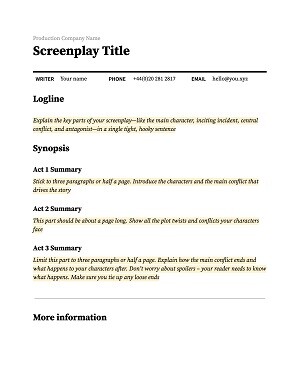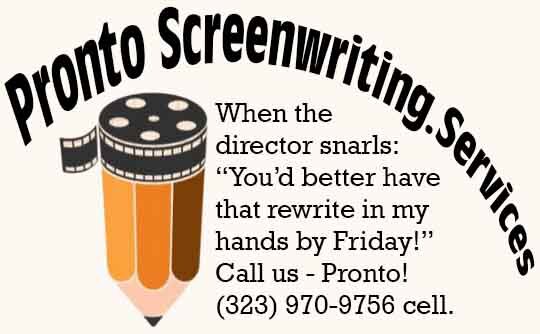Film synopsis, logline & treatment writing services.
 There are several different facets that go into selling a screenplay. A pitch deck is the industry standard that is used to showcase all the pertinent information to an agency, production company, studio, or any other entity.
There are several different facets that go into selling a screenplay. A pitch deck is the industry standard that is used to showcase all the pertinent information to an agency, production company, studio, or any other entity.
As Alfred Hitchcock once said, “It all starts with a great script!” . That statement couldn’t be more true, but once you have your script, it will reside in your computer or sit on your desk until you get it into the right hands.
To paraphrase writer John Campbell: “The reason 99% of all stories written are not bought by producers is very simple. Producers never buy screenplays that are left on the closet shelf at home.”
When writing a script, an outline is the best place to start. A set of bullet points will highlight the plot points and help with character development. Your script is a journey, and the outline is the map. Your outline is not something that will be seen in a pitch deck or by any of the decision-makers, but it’s essential to your work.
After writing your script, you need a logline, a synopsis, and a treatment to go into your pitch deck along with a budget top sheet, box office comparisons, locations, and more. These are important elements that provide insight into your project at a glance.
Many writers develop their treatment first. A treatment is basically a short story version of your script. It can be anywhere from two or three pages, to even 30 pages. It is a much more detailed version of your outline.
After that, the script can be written. There will be many drafts before you reach the final draft and there may even be a director’s cut once you sell it, but let’s not get too far ahead.
After your script is written, it’s time to think of a logline. This is 25 words that tell what your script is about. The most basic formula for constructing your logline looks like this: When the inciting incident occurs, a protagonist must overcome an obstacle. A perfect example is this logline for the famous 1972 film, The Godfather: “The aging patriarch of an organized crime dynasty transfers control of his clandestine empire to his reluctant son.”
After you’ve got your logline, work on your synopsis next. This is often what you see on the back of a DVD cover or in NetFlix descriptions. It’s only a few paragraphs but summarizes the entire script.
Now you’re ready for your pitch deck. You need a good pitch to get people interested in your project. This is what wets the appetite of potential investors and clients. Taking the above elements and putting them all together in a cohesive package that will appeal to the power players.
There is a lot to do and even if you’re a skilled writer, you might need help. This is where a ghostwriting screenwriter comes in. An expert writer can help pen your script, write your logline, synopsis, and treatment, then put the pitch deck together. Many authors shy away from hiring professionals because they want to be credited as the sole writer and retain rights to the project. The good news is that “ghostwriting” means his or her work is uncredited. They work behind the scenes only and are highly skilled at writing scripts, proposals, query letters, among others. Many famous authors you may have read have utilized the skillset of a ghostwriter.
Pronto Screenwriting Services has many outstanding screenwriters under contract. The service is operated by Michael McKown, whose writers have been providing outline, treatment, synopsis, logline and script writing services since 2002.
Your first consultation is free.
All you have to do is call, text, email or fill out the handy form on the contact page.

